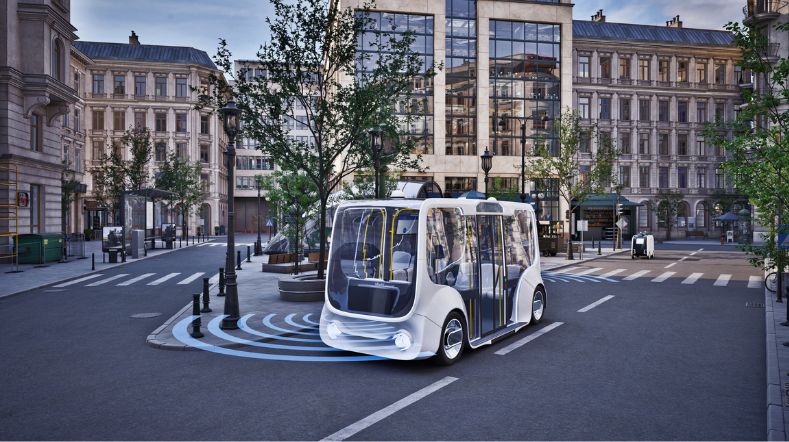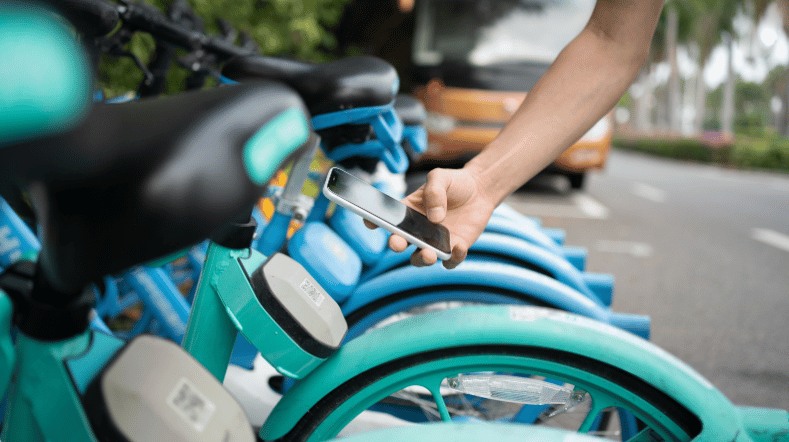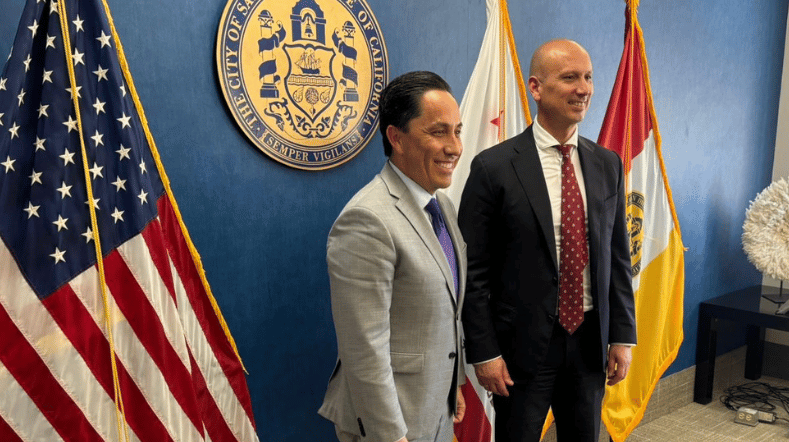
Liveable city: How do you get the platform economy to work for your city?
Shared electric scooters, taxis, bicycles and rapid delivery operators are flooding our cities and having a disruptive effect on accessibility and safety. Without proper management, the negative social consequences may be considerable. TNO helps policymakers stay in control so that innovative platform services work for their city and for all citizens too.
Want to learn more?
Do you want to know how you can work towards creating a liveable city? Receive the paper ‘Liveable city: Forward together with TNO – top 3 challenges for Dutch cities’
Uber took a giant slice out of the taxi market in no time at all. ViaVan vehicles operate with fares below the public transport level and take you from door to door, so why wait for the tram or metro? Instead of walking or cycling, young people prefer to take a shared scooter from Check, Felyx or GO. And probably in the future an electric kick scooter. Rapid delivery riders from Gorillas and Getir fly through the city at great risk to their own and others’ lives, and all for a packet of crisps.
Sharing platforms and other ‘Mobility-as-a-Service’ (in short, MaaS) initiatives are not new. But their impact on cities is unprecedented. According to Maaike Snelder, Principal Scientist with TNO, this is because the limits of the current mobility system have been reached. ‘There’s hardly any spare capacity, so even the smallest disruptions can have major consequences. New mobility services are needed to complement traditional modes of transport. The thing is, authorities often do not know how to manage them, which means cities are bound to become gridlocked,’ Snelder warns.
MaaS concepts produce zero or very low emissions. That’s all well and good, but they also lead to increased movements and replace healthier choices, such as public transport, walking or cycling.
Getting a grip on MaaS
Gridlocked inner cities, poor air quality, streets full of parked metal: MaaS initiatives can make a positive contribution to all these problems. But the commercial objectives of the providers are by no means always in line with the public interest. Also new platforms often take no account of the local context and existing policy. And they accept no responsibility at all for the social consequences. For example, many MaaS concepts produce zero or very low emissions, thus contributing to the objective of a clean city. That’s all well and good, but they also lead to increased movements. Or they replace trips that are also sustainable and in many cases healthier and less space-intensive, such as public transport, walking or cycling.
The risk is the emergence of a gap between the solution aimed at by policymakers and the reality. The platform economy is still in its infancy, and governments the world over are wrestling with different governance models for MaaS. What have we learnt so far about the do’s and don’ts of implementing MaaS?
Maintain control via public-private models
On behalf of the Ministry of Infrastructure & Water Management (I&W), TNO has researched the policy on Mobility-as-a-Service in places such as Paris, Los Angeles and Singapore. ‘The most important result of the survey is that countries are shifting more and more towards a public-private model in order to maintain control of progress towards the social objectives,’ says researcher Geiske Bouma from TNO.
Close involvement of the authority concerned is relevant in all cases. Monitoring and learning are also important here, so that MaaS does not become an end in itself but rather a means for raising the level of liveable cities and sustainable mobility. ‘That kind of learning environment and the possibility of adjusting course or scaling up are still missing in many cases,’ notes Bouma. She also observes that there is still little monitoring of the promise of MaaS and the extent to which it really contributes to social objectives.
Want to find out more about the liveable city of tomorrow?
Challenge the market
Policymakers can certainly establish frameworks within which markets may innovate. Indeed, by establishing clear goals and pursuing innovative purchasing policies that send clear signals – making use of governments’ purchasing power – you can challenge the market to develop new solutions and business cases that contribute to your objectives.
Maaike Snelder: ‘At TNO we help policymakers to obtain clarity as to what their policy goals are, and subsequently what the ideal picture should look like. This tells you how much shared mobility is desirable and where. So you can make the corresponding agreements with the market operators. And it also tells you what side policies are needed as regards parking spaces and charges for example, or low-traffic and low-emission zones, etc. With this approach, you remove some of the uncertainty for policymakers, making them less fearful of making choices the impact of which will not be seen for perhaps five or ten years.’
The power of data sharing
In order to keep a grip on mobility in your city, data are enormously valuable. They enable you to analyse traffic flows and monitor the use of mobility. And by combining data, invaluable insights are obtained. At TNO the ICT department is working hard on innovations such as Multi-Party Computation and Federated Learning whereby datasets of large groups of people or organisations can be securely combined. With MaaS platforms it is often unclear just how the security and privacy of data is assured.
For this reason, TNO ICT helps authorities with requesting platform data, for example in the case of tendering procedures. What requirements must the data meet and what conditions can authorities lay down for their use?
MaaS for all
How do we bring about a playing field on which we make use of all the latest technological innovations but for everyone’s benefit, so that they really contribute to an inclusive and liveable city? MaaS must be accessible to every inhabitant of and visitor to a city or region, and therefore should also be present in districts that are not so busy. It must be just as much a part of life in deprived neighbourhoods or peripheral areas as it is in the city centre. How do you make sure platform mobility contributes to a future-proof mobility system for one and all? That is the challenge that TNO is helping authorities with, by providing an insight into the consequences of policy choices.
Get inspired
Don't jump on every innovation bandwagon: TNO's framework to help cities make smarter mobility choices


Urban space


Zero emission urban mobility


How governments can make MaaS work to societal goals


With Urban Strategy, TNO connects with innovative U.S. West Coast in San Diego



